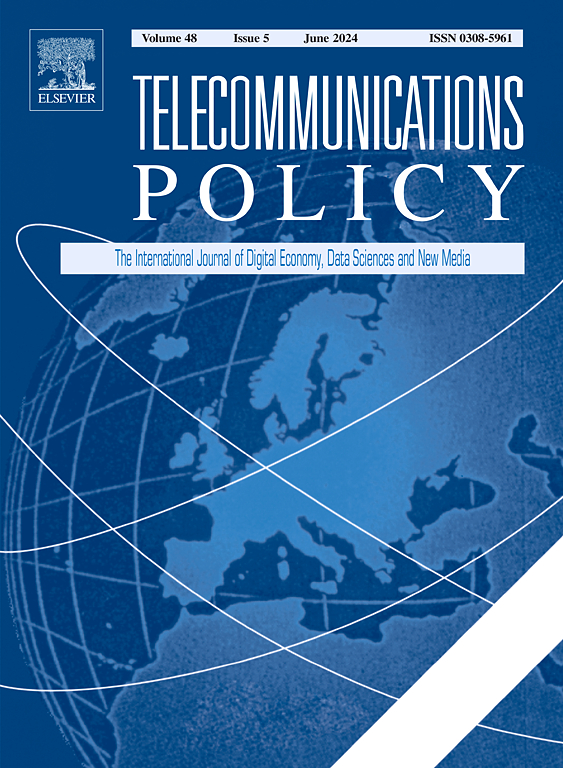Willingness to pay for broadband: A case study of Wisconsin
IF 6.4
2区 管理学
Q1 COMMUNICATION
引用次数: 0
Abstract
As broadband expansion efforts in the U.S. continue with historic investments, consumer demand for residential broadband services is of first-order importance. Several past broadband willingness to pay studies estimate the value of broadband to be low, compared to the current national average cost of internet subscriptions being around $65 per month. Additional estimates of household's willingness to pay for broadband are needed to provide more insight into how much households value these services and what type of support would be most efficient in increasing broadband adoption to close the digital divide. These estimates are helpful for policymakers, internet service providers, and community leaders working on broadband subsidy programs, trying to bring ISPs to communities, and setting service prices. Using choice experiment data from a 2022 broadband survey in Wisconsin, I find households are willing to pay $45-$334 per month to go from not having internet at home to having speeds between 25 Mbps and 1,000 Mbps and are willing to pay $10-$38 for greater reliability, depending on household income level. While consumers are willing to pay more for speed than reliability, the value consumers place on speed is diminishing. Connection is valuable to people, but getting connected at a much faster speed is not seen as worth a lot more. These estimates suggest households place a high value on home internet and are willing to pay at least, if not more, than prices already available on the market in many places.
宽带付费意愿:威斯康星州案例研究
随着美国宽带扩容工作的持续进行和历史性投资的不断增加,消费者对住宅宽带服务的需求显得尤为重要。过去的一些宽带支付意愿研究估计宽带的价值较低,而目前全国互联网用户的平均费用约为每月 65 美元。需要对家庭宽带支付意愿进行更多估算,以便更深入地了解家庭对这些服务的重视程度,以及哪种类型的支持能最有效地提高宽带采用率,从而缩小数字鸿沟。这些估算结果有助于政策制定者、互联网服务提供商和社区领导者制定宽带补贴计划,努力将互联网服务提供商引入社区,并确定服务价格。通过使用威斯康星州 2022 年宽带调查中的选择实验数据,我发现家庭愿意每月支付 45 美元至 334 美元的费用,从家中没有互联网到拥有 25 Mbps 至 1,000 Mbps 的网速,并愿意为更高的可靠性支付 10 美元至 38 美元,具体取决于家庭收入水平。虽然消费者愿意为速度而不是可靠性支付更多费用,但消费者对速度的重视程度正在降低。对人们来说,连接是有价值的,但以更快的速度连接并不被认为更有价值。这些估计表明,家庭对家庭互联网的重视程度很高,即使不愿意支付更高的价格,也愿意支付至少高于许多地方市场上已有价格的价格。
本文章由计算机程序翻译,如有差异,请以英文原文为准。
求助全文
约1分钟内获得全文
求助全文
来源期刊

Telecommunications Policy
工程技术-电信学
CiteScore
10.80
自引率
12.50%
发文量
122
审稿时长
38 days
期刊介绍:
Telecommunications Policy is concerned with the impact of digitalization in the economy and society. The journal is multidisciplinary, encompassing conceptual, theoretical and empirical studies, quantitative as well as qualitative. The scope includes policy, regulation, and governance; big data, artificial intelligence and data science; new and traditional sectors encompassing new media and the platform economy; management, entrepreneurship, innovation and use. Contributions may explore these topics at national, regional and international levels, including issues confronting both developed and developing countries. The papers accepted by the journal meet high standards of analytical rigor and policy relevance.
 求助内容:
求助内容: 应助结果提醒方式:
应助结果提醒方式:


